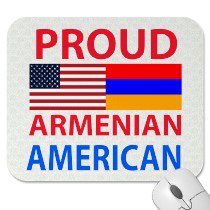
By: Zara Hovasapyan
If you haven’t played the “wikipedia game,” it is actually quite an amusing way of passing time. With a friend, or alone, you can choose article A to begin with and, by clicking links, finish at article B. An example would be to start with the wikipedia article on Dolma and end at the wikipedia article on Mogadishu. Believe me, it can be done. However, if you start with any article pertaining to Armenian politics or the Armenian-American community, it only takes a few links to get to an article on the “White Genocide.”
What is the White Genocide that I am referring to? The White Genocide is the assimilation of the Diasporan Armenians into Western Society. Though we lost many Armenians in numbers during the Armenian Genocide in the early 1900’s, what is worse is that the Turks attempted to annihilate our culture, our language and our heritage and eradicate all traces of Armenian existence. We now face a similar problem: assimilation. I have noticed a trend that Armenian youths are more inclined to adopt the “American” culture and sever their ties with the Armenian community.
As an Armenian-American, I view my identity as the overlapping part of two circles in a Venn diagram. From that perspective, being Armenian and being American are not mutually exclusive. I have proudly adopted many aspects of American culture while preserving and perpetuating Armenian culture simultaneously.
Few things bring me more joy than going to the Pantages or the Ahmanson with my mom to watch a Broadway musical. Eating brown sugar oatmeal before a midterm has become a ritual for me. Memorial day weekend is spent at an American national park every single year. I cherish these traditions that I have gained from living in the United States, however, for everything American that makes me happy, I have an Armenian pastime to counter that American influence. And they are not hard to find. From watching Armenian television, I get all the Armenian humor I need to fill my day with laughs. Walking a few blocks to the closest Armenian store and bringing home some dolma, going to an Armenian Apostolic Church almost every Sunday, reading Armenian history, and even something as simple as speaking Armenian with my family.
I love the United States and I love American culture. California has been my home for the past 16 years; however, my roots will never be forgotten. Changing my physical environment does not change my heritage, my family’s history, or my sense of self. I am not simply Armenian or simply American, I am Armenian-American (the hyphen is the operative character in this sentence) and everything that I am today was influenced by both cultures without dwindling the influence of either. While it may appear that cultivating only one culture is the easier path, adopting both and revering the nature of co-existing cultures is more enriching and rewarding.